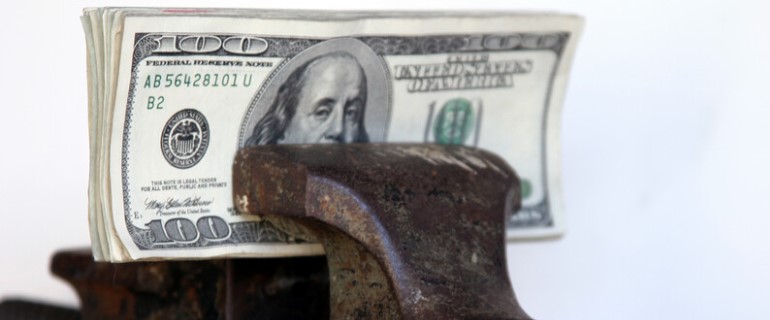The residential real estate market has received quite a bit of attention over the last two years, and for good reason.
The housing market has become so tight that inventory is extremely hard to come by in nearly every market, and prices are now higher than ever for homes. The properties that are listed for sale typically get snatched up in record time—and often sell for higher than asking price—which has made it tough for most buyers to compete.
Case in point: A moderately priced home recently went for sale in Raleigh, North Carolina, and it was absolutely inundated by potential buyers searching for affordable properties. That mad dash by buyers was enough to make national headlines, but any buyer who’s looked for property in the last two years was almost certainly not surprised by the overwhelming interest. That’s just part of what buyers face when looking for property in a red-hot housing market.
But the property buying frenzy that has occurred recently has hardly been limited to the residential housing market. Commercial real estate transactions have also exploded—with a surprising surge in transactions occurring over the last year. Throughout 2021, investors big and small snatched up everything from apartment buildings, warehouses, and distribution centers to other types of commercial properties, such as hotels. As of the second quarter of 2021, multifamily property sales were up 26% year over year and nonresidential properties were up 16% compared to the year prior.
There were also increases in sales rates across all commercial property types. The rampant demand for commercial properties also led to $193 billion in commercial real estate transactions occurring in the third quarter of 2021—and a record $809 billion in commercial property sales for all of 2021.
So what exactly drove the surge in commercial real estate transactions throughout 2021—and why? EquityMultiple compiled a list of six important trends in the commercial real estate markets during 2021, covering topics from the rise of individual investors to the impact of the federal reserve’s pandemic policies. Here’s what you should know.
1. Weak Bond Markets Sent Investors Seeking Alternatives
When the returns on traditional investments, like stocks or bonds, are down, investors tend to seek out opportunities to make the target returns on their investments. At the close of 2021, the U.S. stock market posted the best three-year returns seen in 24 years—but the same was not true of bonds. In December 2021, the inflation rate in the U.S. jumped a whopping 7%—which, in turn, quickly pushed bond prices lower and decreased the potential for high returns for investors.
The lower bond prices caused key bond market indices to post their first losses since 2013, and led investors to look for other ways to put their money to work, which included commercial real estate securities, real estate investment trusts, and other commercial property investments. While potentially risky, commercial real estate transactions can be lucrative for investors, with annual yields averaging between 6% and 12%, with potential for significant appreciation depending on market conditions and other factors. That means investing in commercial real estate has the potential for a significantly higher return on investment when compared to the average return on bonds.
2. Federal Reserve Prevented A Distressed Property Sell-Off, Making Easy Debt Available For Deals
When the COVID-19 pandemic hit, investors expected the commercial real estate market to take a significant hit—which would have allowed them to snatch up distressed properties at bargain-basement prices. That didn’t happen, however, because the Federal Reserve made it a lot easier and cheaper to borrow by significantly lowering interest rates at the start of the pandemic. The cheaper cost of borrowing led to $102 billion in loans being extended to property owners in the first nine months of 2021, which kept the commercial real estate market from collapsing.
These loans were then converted into commercial mortgage securities, which are offered to individual investors, investment firms, and other financial management companies as shares. By doing this, swaths of investors were able to buy into commercial real estate transactions without having to fund the full purchase of the physical properties or land. Apartment buildings, life science labs, and industrial properties—which were expected to yield higher returns than other commercial properties, such as shopping malls or retail centers—were especially sought after. These types of commercial properties yielded more than $193 billion in sales during the third quarter of 2021.
3. Demand For Distribution Centers Surged
Online shopping became even more popular than before during the pandemic, as in-person shopping became a dangerous—and, in some cases, nearly impossible—task. That surge in online orders for everything from food items to toilet paper meant online and e-commerce retailers needed to lease more distribution center space to have a base to store their inventory and originate shipments.
In turn, the demand for distribution centers surged, and vacancy rates at these properties reached historic lows. That led investors to capitalize on the trend by buying distribution centers and then rake in the profits from the high lease prices. Rampant supply chain shortages also made it difficult to develop more of these types of properties, which only added more fuel to the fire. Distribution centers and warehouses were suddenly selling for a premium, and investors were willing to pay the price for these properties, which kept transaction rates high.
4. Soaring Home Prices Increased Demand For Apartment Rentals
Between the housing market inventory shortage and the rapidly increasing prices of homes, buyers have been priced out or pushed out of home purchases across the nation. In turn, the demand for rental properties has skyrocketed—which has led investors to set their sights on apartment buildings. In 2021, multifamily property sales—which includes apartments, duplexes, fourplexes, and other multifamily units—totaled $335.3 billion, up 128% from the year prior.
By purchasing apartment buildings, commercial property investors are able to capitalize on the opportunity to profit from the increased rent prices that occurred. In 2021, rent increased by an average of 11%—or three times the normal rate—and it has only continued to increase from there. As of February 2022, the average national rent price for one-bedroom units was up 22.6% year over year, and two-bedroom rent was up an average of 20.4%.
5. Small Investors Flocked To Commercial Real Estate With Non-Traded Real Estate Investment Trusts
Real estate investment trusts are attractive to investors because they allow investors to buy shares of a trust that invests in commercial real estate projects rather than buying and managing their own properties. This can make commercial real estate less risky and more affordable for investors, but you have to be an accredited investor to invest in most traditional publicly traded REITs—which comes with numerous financial requirements, like a high net worth and high earned income.
As such, it can be tough for small investors to qualify, which has led them to set their sights on other options such as real estate crowdfunding, which opens access to commercial real estate transitions and other private fund structures. Another option includes open-ended funds, known as non-traded real estate investment trusts. Non-traded REITs accounted for about 42% of the alternative investment market in 2021, with about $36.5 billion total in fundraising that year alone. Part of the draw is that, unlike most traditional REITs, investors can buy into non-traded REITs for as little as $2,500—and there’s an opportunity for big returns in exchange. Most non-traded REITs have been paying dividends above 5%, which is competitive—and often beats—other types of fixed-income investments.
6. Investors Were Looking For An Inflation Hedge
Rising inflation has become a growing issue, as the rate of inflation increased by 7% in 2021. Periods of rampant inflation are tough on the economy because they cause the price of everything from rent to groceries to increase, which makes the dollar less valuable. Inflation can also cause a big hit to potential returns on investments, and that’s especially true for investments with fixed rates, like money market accounts, because these rates are generally lower than the rate of inflation, which means that the money earned on these accounts won’t cover the loss from inflation.
The one type of investment that tends to withstand surges in inflation, however, is commercial real estate. That’s because investors can raise the rental or lease rates on their properties to combat any potential losses from inflation. That being the case, investors purchased a record number of commercial properties in 2021 to hedge against inflation and mitigate any potential losses. This, in turn, helped real estate transactions surge.
Source: Clayton News-Daily








